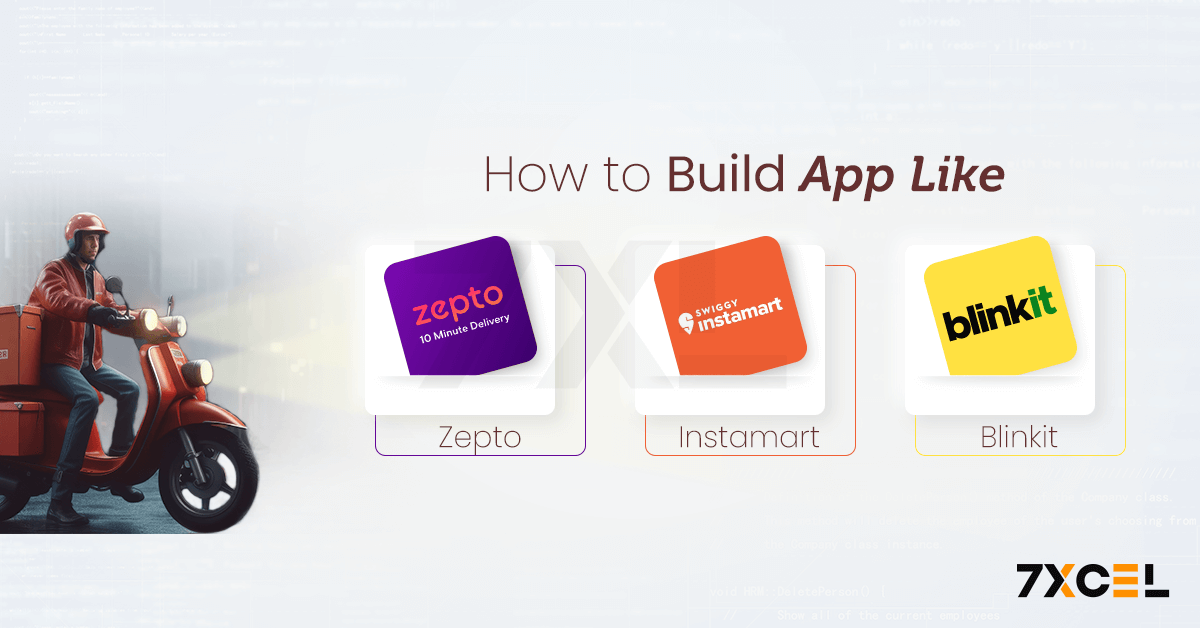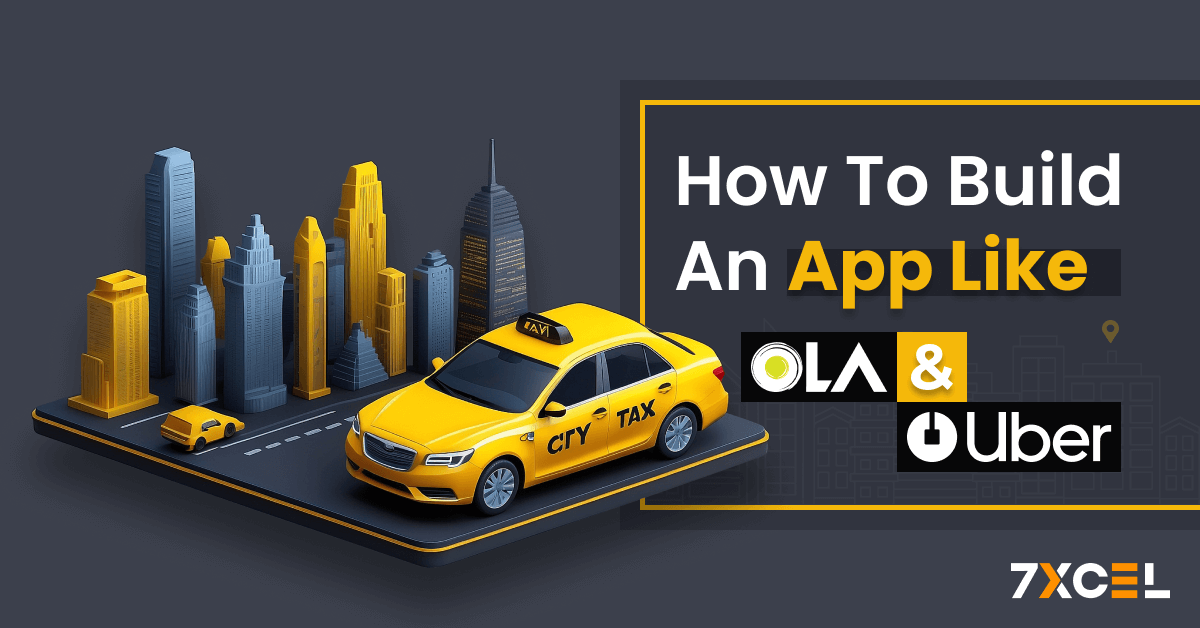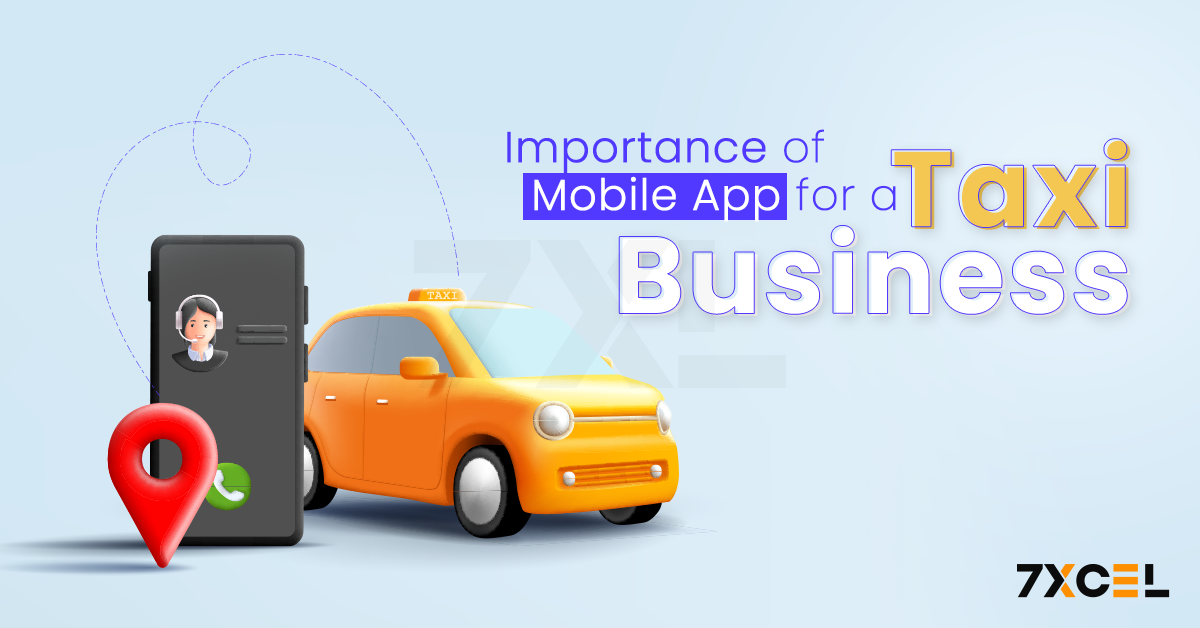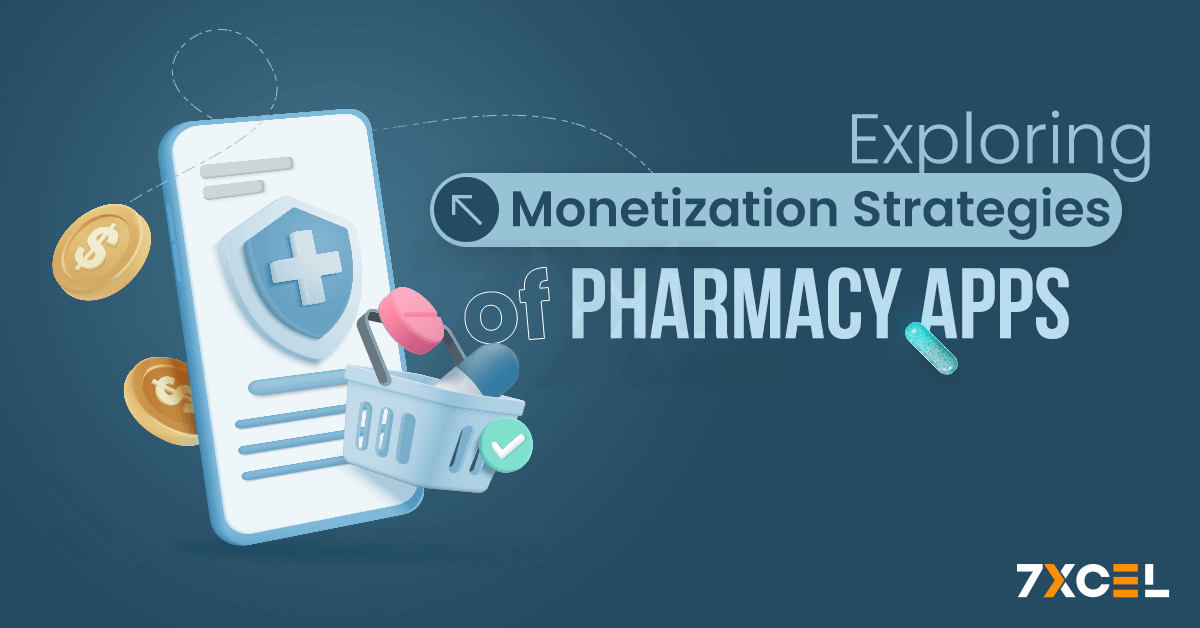Quick Summary:
Building an grocery app like Zepto, Instamart, or Blinkit involves thorough market research, user-friendly design, and robust development. Emphasize understanding market demands and providing a superior customer experience to succeed in the fast-growing quick commerce sector.
In this blog, we’re going to discuss📝
- Understanding the Instant Grocery Delivery Landscape
- Key Features and Functionalities for the app like Zepto, Instamart, Blinkit
- Cost to Develop an App Like Zepto, Instamart, or Blinkit
- Technology Stack and Architecture for the app like Zepto, Instamart, Blinkit
- Monetization Strategies for the app like Zepto, Instamart, Blinkit
- Scaling and Expanding Your Instant Grocery Delivery App
- Best Practices for building an app like Zepto, Instamart, and Blinkit
The instant grocery delivery market has experienced a meteoric rise in recent years, driven by the growing consumer demand for convenience, speed, and on-demand access to essential goods. Companies like Zepto, Instamart, and Blinkit have emerged as leaders in this space, revolutionizing the way people shop for their daily essentials. As an IT solutions provider, we understand the immense potential of this market and the opportunity to develop a cutting-edge instant grocery delivery app that can compete with the industry giants.
Understanding the Instant Grocery Delivery Landscape
The instant grocery delivery market has witnessed exponential growth, fueled by the changing consumer behavior and the need for convenient, time-saving solutions. Zepto, Instamart, and Blinkit have set the benchmark for this industry, offering lightning-fast delivery, a wide range of products, and seamless user experiences.
To build a successful cost-efficient instant grocery delivery app, it’s important to understand the key factors that have contributed to the success of these industry leaders:
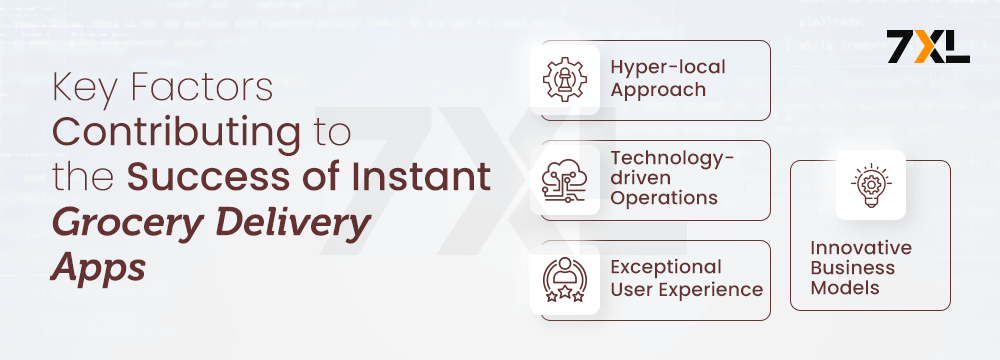
Hyper-local Approach:
Build Grocery App Like Zepto, Instamart, and Blinkit which have adopted a hyper-local strategy, establishing dark stores and micro-fulfillment centers in densely populated urban areas to ensure rapid delivery times.
Technology-driven Operations:
These companies have leveraged advanced technologies, such as real-time inventory management, route optimization, and data-driven demand forecasting, to streamline their operations and enhance efficiency.
Exceptional User Experience:
The apps developed by Zepto, Instamart, and Blinkit offer intuitive interfaces, personalized product recommendations, and seamless checkout processes to provide a delightful customer experience.
Innovative Business Models:
These companies have experimented with various monetization strategies, including subscription plans, dynamic pricing, and partnerships with brands, to create sustainable revenue streams.
Key Features and Functionalities for the App Like Zepto, Instamart, Blinkit
Building a successful instant grocery delivery app requires incorporating a comprehensive set of features that address consumer needs, from robust product catalogs to hyper-local delivery and personalized recommendations, to deliver a seamless user experience. Here is the breakdown:
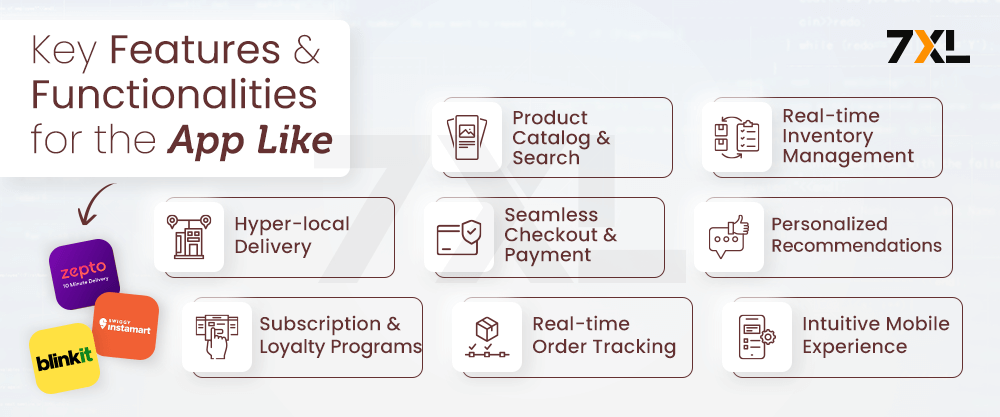
Product Catalog and Search:
Develop a comprehensive product catalog that covers a wide range of grocery items, with advanced search and filtering capabilities to help users find what they need quickly.
- Real-time Inventory Management: Install a reliable system for managing inventory that allows for easy order fulfillment and real-time information on product availability.
- Hyper-local Delivery: Leverage geolocation technology and establish a network of dark stores or micro-fulfillment centers to offer lightning-fast delivery within a designated radius.
- Seamless Checkout and Payment: Integrate a user-friendly checkout process with multiple payment options, including digital wallets and mobile money, to ensure a frictionless shopping experience.
- Personalized Recommendations: Making use of data analytics and machine learning algorithms, offer individualized product suggestions based on past purchases and user preferences.
- Subscription and Loyalty Programs: Offer subscription-based plans and loyalty programs to incentivize repeat purchases and foster customer loyalty.
- Real-time Order Tracking: Give customers the ability to monitor the real-time status of their purchases, including information on the progress of deliveries and the anticipated arrival time.
- Intuitive Mobile Experience: Develop a mobile-first app with a clean, intuitive interface that is optimized for seamless navigation and a delightful user experience.
Cost to Develop an App Like Zepto, Instamart, or Blinkit
While building instant grocery app like Zepto, Instamart, and Blinkit requires an deep understanding of the associated costs. As an IT service provider we offer insights into the technology, features, and strategies needed to build a successful and scalable app in this dynamic market. The cost of developing a quick-commerce app can vary widely based on several factors. Here is the breakdown of each:

- Feature Complexity: Basic vs advanced features
- Platform: iOS, Android, or both
- Design: Custom vs template-based design
- Development Team: In-house vs outsourced development
On average, developing a quick-commerce app can range from $150,000 to $400,000. Here’s a breakdown of the estimated costs:
| Cost Component | Description | Estimated Cost Range |
| App Development | ★ Frontend development ★ Backend development ★ API integration ★ Testing and QA |
$50,000 – $150,000+ |
| UI/UX Design | ★ User research ★ Wireframing and prototyping ★ Visual design ★ Usability testing |
$10,000 – $50,000+ |
| Geolocation and Mapping | ★ Integration with mapping APIs ★ Route optimization ★ Real-time tracking |
$5,000 – $20,000+ |
| Payment Gateway Integration | ★ Integration with payment processors ★ Secure transaction handling ★ PCI compliance |
$5,000 – $20,000+ |
| Database and Storage | ★ Database setup and configuration ★ Data storage and management ★ Backup and recovery |
$5,000 – $20,000+ |
| Hosting and Infrastructure | ★ Cloud hosting (e.g., AWS, Google Cloud) ★ Load balancing and scaling ★ Security measures |
$5,000 – $20,000+ per year |
| Messaging and Notifications | ★ Integration with push notification services ★ Real-time updates and alerts |
$2,500 – $10,000+ |
| Admin Panel Development | ★ Order management ★ Inventory control ★ Analytics and reporting |
$10,000 – $30,000+ |
| Ongoing Maintenance and Support | ★ Bug fixes and updates ★ Performance optimization ★ Security patches |
15-20% of development cost per year |
| Marketing and User Acquisition | ★ App store optimization (ASO) ★ Social media marketing ★ Referral programs ★ Promotional offers |
Varies based on strategy and scale |
Investing in a quality development team and thorough planning can significantly influence the overall cost and success of the project.
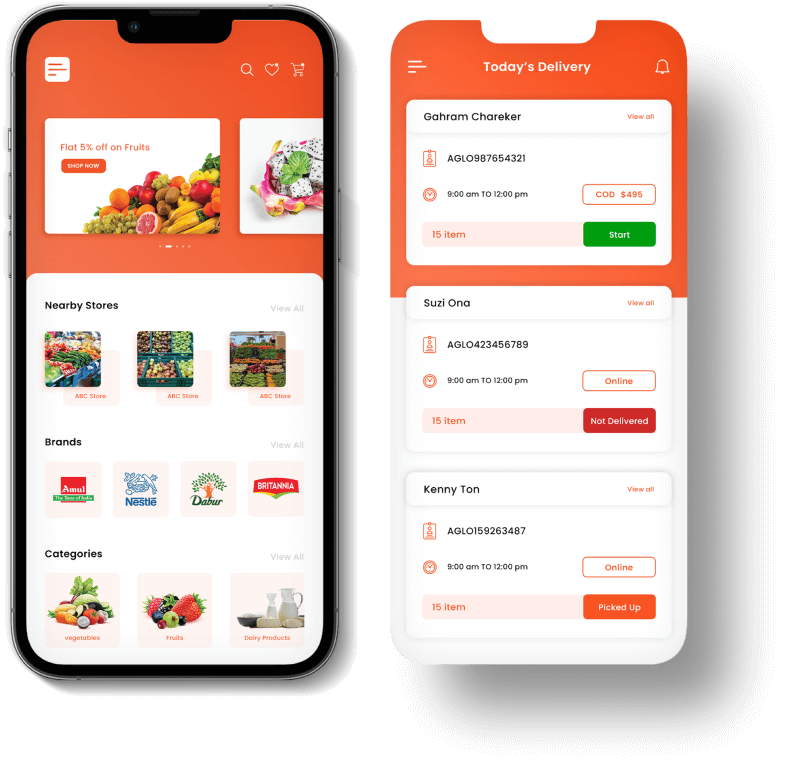
Interested to develop a standout grocery delivery app?
Revamp your grocery business with 7xcel’s cutting-edge app development, extending your influence online.
Technology Stack and Architecture for the app like Zepto, Instamart, Blinkit
A carefully thought-out technology stack & architecture, utilizing the ideal blend of frontend, backend, & infrastructure technologies, are essential for creating a scalable and high-performing quick grocery delivery service. Among the crucial elements to think about are:
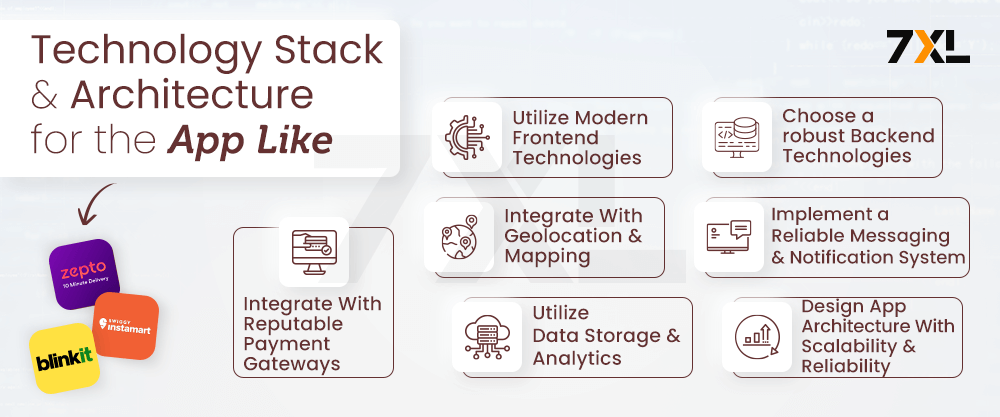
- Frontend Technologies: Utilize modern frontend frameworks and libraries, such as React, Angular, or Flutter, to develop a responsive and user-friendly interface.
- Backend Technologies: Choose a robust backend framework, such as Node.js, Ruby on Rails, or Django, to handle the app’s core functionalities, including order management, inventory control, and delivery logistics.
- Geolocation and Mapping: Integrate with mapping and geolocation services, such as Google Maps or OpenStreetMap, to provide accurate location tracking, route planning, and real-time updates on delivery progress.
- Messaging and Notifications: Implement a reliable messaging and notification system, using technologies like WebSockets, Firebase Cloud Messaging, or Amazon SNS, to enable seamless communication between users, delivery agents, and the app.
- Payment Processing: Integrate with reputable payment gateways, such as Stripe, Braintree, or PayPal, to handle secure financial transactions.
- Data Storage and Analytics: Utilize a combination of relational databases (e.g., MySQL, PostgreSQL) and NoSQL databases (e.g., MongoDB, Cassandra) to store and manage user, order, and inventory data. Implement a robust data analytics and reporting system to gain insights and optimize your app’s performance.
- Scalability and Reliability: Design your app’s architecture with scalability and reliability in mind, leveraging cloud-based infrastructure, load balancing, and containerization technologies (e.g., Docker, Kubernetes) to ensure high availability and seamless performance.
| Component | Technologies |
| Frontend | React, Angular, Flutter |
| Backend | Node.js, Ruby on Rails, Django |
| Geolocation & Mapping | Google Maps, OpenStreetMap |
| Messaging and Notifications | WebSockets, Firebase Cloud Messaging, Amazon SNS |
| Payment Processing | Stripe, Braintree, PayPal |
| Data Storage | MySQL, PostgreSQL, MongoDB, Cassandra |
| Scalability and Reliability | Cloud infrastructure, Load balancing, Containerization (Docker, Kubernetes) |
Monetization Strategies for the App like Zepto, Instamart, Blinkit
Sustainable business models are key to the long-term success of instant grocery delivery apps, with IT solutions providers exploring commission-based, subscription, dynamic pricing, and data monetization strategies to create multiple revenue streams. Here are some effective monetization strategies to consider:
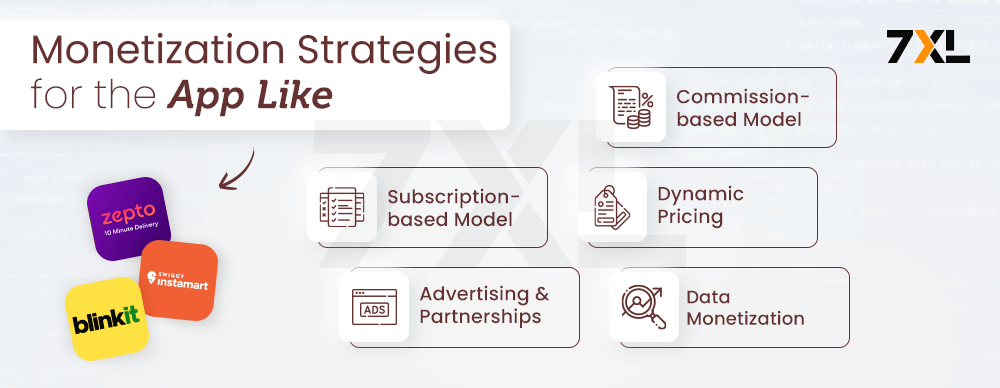
- Commission-based Model: Charge a commission on each successful order, typically ranging from 15% to 25% of the total order value.
- Subscription-based Model: Offer a premium subscription plan that provides users with additional benefits, such as free or discounted delivery, exclusive product offers, and priority support.
- Dynamic Pricing: Implement a dynamic pricing model that adjusts delivery fees based on factors like demand, time of day, and surge pricing during peak hours.
- Advertising and Partnerships: Generate revenue through in-app advertising, sponsored product placements, or strategic partnerships with brands and retailers.
- Data Monetization: Leverage the wealth of data collected through your app, such as user preferences, purchase patterns, and market trends, to offer data-driven insights and services to third-party organizations.
Scaling and Expanding Your Instant Grocery Delivery App
As the market grows, IT solutions providers must have a strategic plan for scaling and expanding their app’s reach and capabilities, including geographic expansion, product diversification, and data-driven decision-making to maintain a competitive edge. Consider the following approaches:
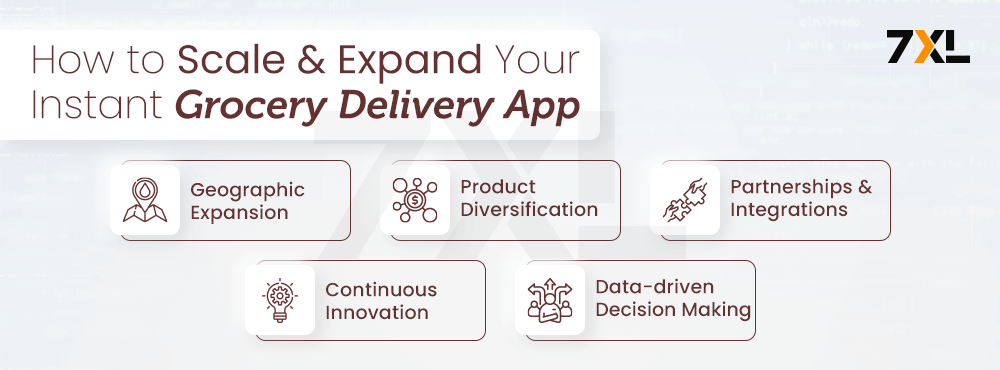
- Geographic Expansion: Gradually expand your service area to new cities or regions, leveraging your existing technology infrastructure and operational expertise.
- Product Diversification: Introduce new product categories, such as household essentials, personal care items, or even ready-to-eat meals, to cater to a broader range of customer needs and generate additional revenue streams.
- Partnerships and Integrations: Collaborate with other e-commerce platforms, logistics providers, or retail chains to offer seamless multi-channel shopping experiences and enhance the overall user experience.
- Continuous Innovation: Regularly gather user feedback, monitor industry trends, and invest in research and development to introduce new features, technologies, and business models that keep your app ahead of the competition.
- Data-driven Decision Making: Leverage the wealth of data collected through your app to make informed decisions about product selection, pricing, marketing strategies, and operational optimization.
As an experienced IT solutions provider, we are committed to helping you build a successful and scalable instant grocery delivery app that can compete with industry leaders like Zepto, Instamart, and Blinkit. By leveraging our expertise in technology, design, and business strategy, we can help you unlock new revenue streams and position your app for long-term growth in the dynamic on-demand grocery delivery market
Best Practices for Building an App Like Zepto, Instamart, and Blinkit
Building a successful instant grocery delivery app like Zepto, Instamart, and Blinkit requires adopting proven best practices. Drawing insights from industry leaders, we outline key strategies for leveraging data, investing in the right technology, and maintaining ethical standards to drive sustainable growth in this dynamic market.

- Focus on User Experience: Prioritize intuitive design and seamless functionality.
- Maintain High Standards of Security: Protect user data with robust security measures.
- Continuously Monitor and Optimize: Use analytics to track performance and make data-driven decisions.
- Adapt to Market Changes: Stay agile and adapt to evolving market trends and user needs.
Adhering to these best practices will help you create a reliable and user-friendly app that stands out in the competitive market.
Conclusion
Building a quick-commerce app like Zepto, Instamart, or Blinkit is a complex but rewarding endeavor. By understanding the market, focusing on essential features, and partnering with a skilled IT company, you can create a successful app that meets market demands and provides a superior user experience. Ready to bring your quick-commerce app to life? Contact us today to get started and drive your business to new heights.
